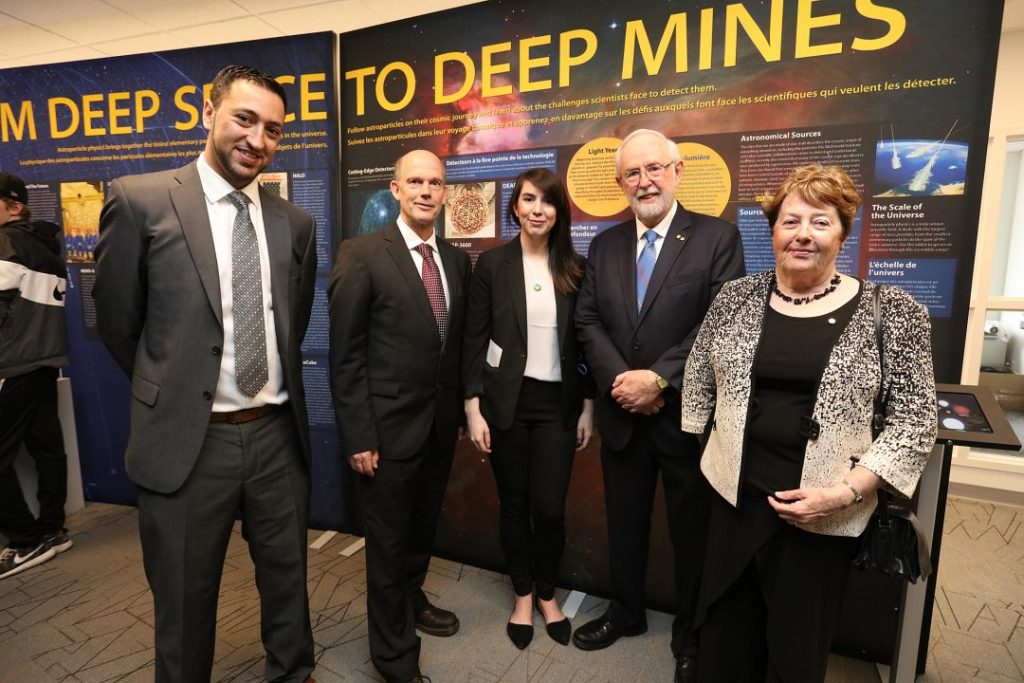Arthur B. McDonald Canadian Astroparticle Physics Research Institute

I’m very pleased to welcome the world’s particle astrophysics community to come to Canada, work at SNOLAB, and to interact with the wonderful team that comes together through our new institute. Welcome to Canada, and welcome to some great science.
In 2015, Queen’s Professor Emeritus Arthur B. McDonald was awarded the Nobel Prize in Physics along with University of Tokyo professor Takaaki Kajita for their contributions to the scientific understanding of neutrinos, the most numerous matter particles in the universe. Working at the Sudbury Neutrino Observatory (SNO), Dr. McDonald and his team used a large underground detector to capture and identify different kinds of neutrinos that had travelled from the sun. Like many scientists before them, they observed the “solar neutrino problem”: the expected number of electron neutrinos (the kind that come from the sun) was three times higher than actual yields. However, the number of neutrinos overall was consistent with their expectations. McDonald and his team then theorized that neutrinos could change form as they travelled, an insight that would solve the solar neutrino problem.
The Arthur B. McDonald Canadian Astroparticle Research Institute aims to build on Dr. McDonald’s legacy and solidify Canada’s role as a leader in astroparticle physics research. It brings together several Canadian institutions already concerned with questions of astroparticle physics, allowing researchers, technical experts, and theorists to leverage partnerships and share resources. While the questions the McDonald Institute hopes to tackle are numerous, an important aspect of its research is the development of new detection technologies required for astroparticle research. Technological applications range from developing materials that give off almost no radiation, new methods to detect and observe particle interactions, as well as advanced computing and data management solutions. This technology has applications outside of astroparticle research: there is a need for new techniques to measure very low levels of radioactivity in environmental monitoring programs, for example, as well as in medical settings. The McDonald Institute hopes to cultivate industrial partnerships in order to give researchers the opportunity to commercialize their work.
For further information, browse the McDonald Institute’s website.